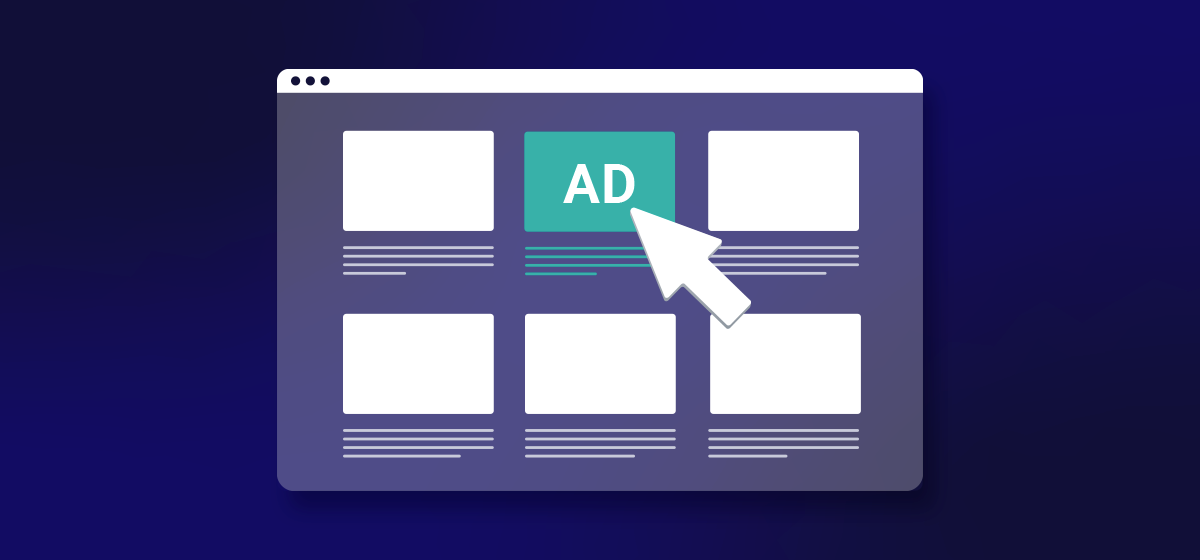Native advertising has been steadily gaining ground in the digital marketing game for some time now. In the US alone, its market is expected to reach nearly $100 billion in 2023, which would amount to 12.5% growth YoY. Even more impressive is that as recently as 2020, native ads made up 65% of all digital display ads in the US, making it one of the fastest-growing ad formats in the industry.
All signs point to the demand for native ad space continuing for the foreseeable future. But if native advertising units are not in your sales deck just yet, we’re here to help! DV Publisher Suite helps premium publishers analyze and optimize their inventory, whatever channel it may be, and use performance and quality data to more effectively sell to advertisers. To help you accomplish your advertising goals, we put together some ideas to help you understand native advertising and capitalize on this upward-trending approach to your inventory.
What Is Native Advertising and How Does It Benefit Publishers?
An ad is considered “native” when it’s integrated seamlessly into the design of the app or website that it’s served on. That idea has many forms, as we’ll discuss in the next section, but the key takeaway here is that the ad is structured to accommodate its environment.
In many ways, native advertising is the result of everyday Internet users seeking a less disruptive browsing experience. For instance, a survey conducted by Hubspot revealed that 73% of Internet users surveyed “don’t like” traditional pop-up ads that interrupted their consumption of content. With negative sentiment that strong, it made sense for advertisers to explore ways to get their message to audiences without snatching their attention span so overtly. Enter, native advertising.
Beyond the growing user and advertiser interest, native ads offer several additional benefits to online publishers and their sites:
- Increased control over layout and content
- More engagement opportunities
- High ad unit adaptability across devices
- Enhanced user experience
Are There Different Forms of Native Advertising?
There are many different kinds of native ad units, and the list continues to grow as new platforms continue to enter the market. The IAB has officially identified six forms of native advertising since 2013, but we’ve put together a list that’s more geared toward our publisher audience.
In-feed Units
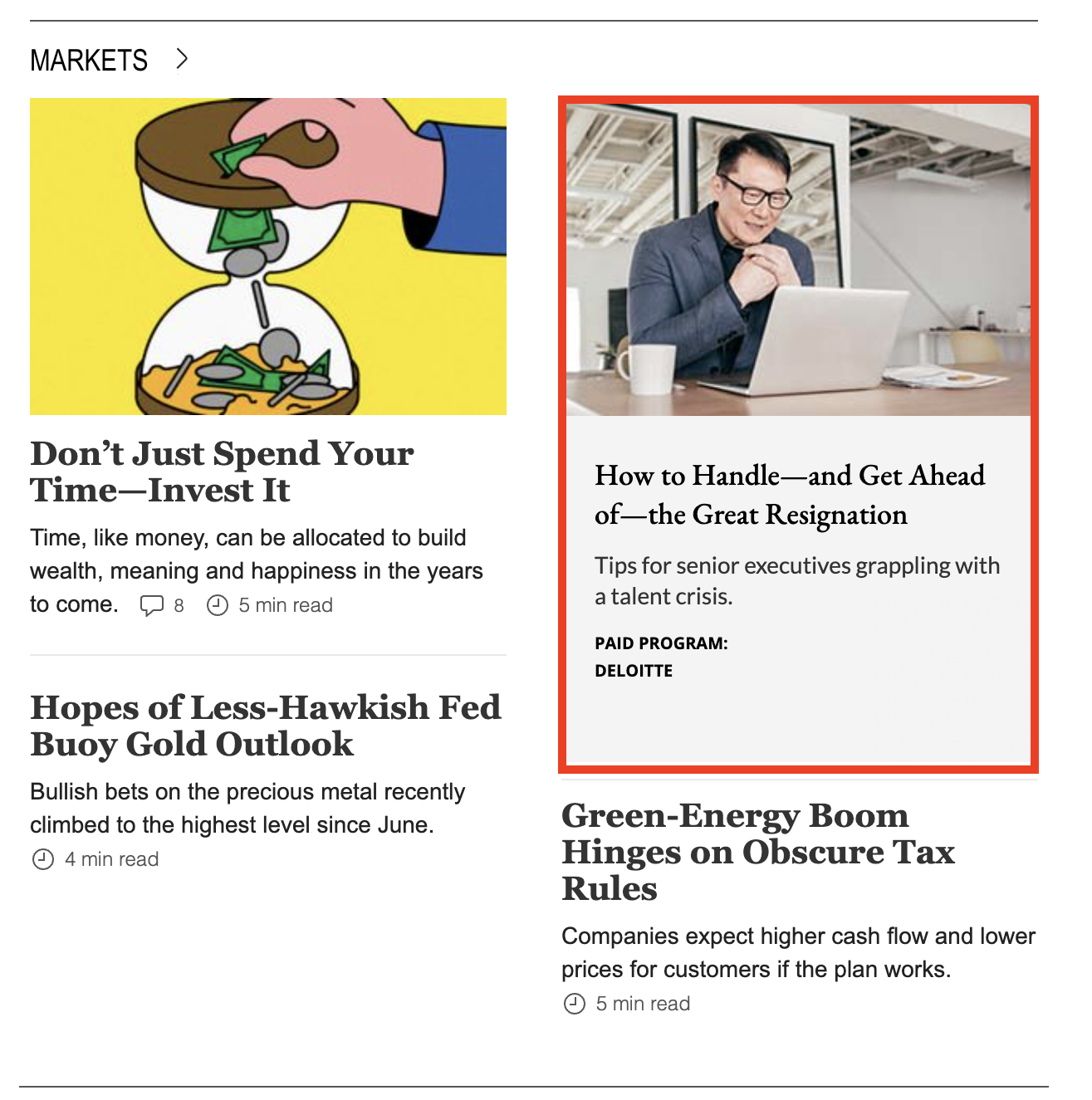
Ideal for news and information publishers, in-feed units appear alongside the primary article feed of a publisher’s site. As users browse, they’ll encounter ad content that’s packaged to directly resemble a publisher’s own articles, but tagged with words like “Sponsored” or “Collaborative” in order to make a distinction from that publisher’s official content.
Something worth noting here is the distinction between branded content and sponsored content. Generally speaking, branded content is produced by advertisers exclusively, and sponsored content is produced alongside the publisher’s editorial team.
Recommendation Widgets
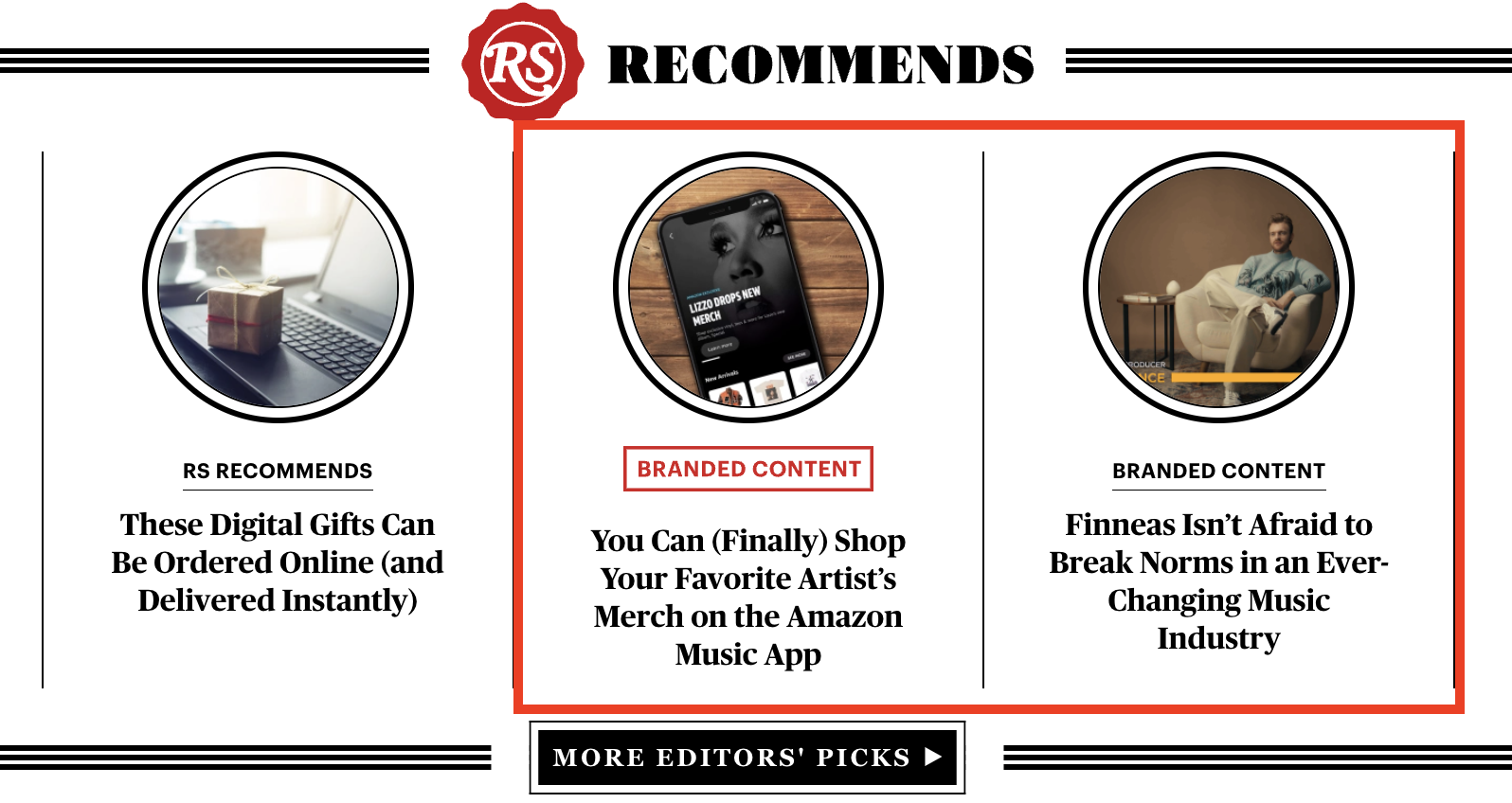
Like in-feed units, recommendation widgets are ideal for publishers specializing in written content, because they appear as readable articles. However, unlike in-feed units, a recommendation widget ad is served below or beside the body of an official article, not as its own article within the main content feed. The idea here is to present ad content as “recommended reading” in addition to the content that a user initially clicked on.
Promoted Listings
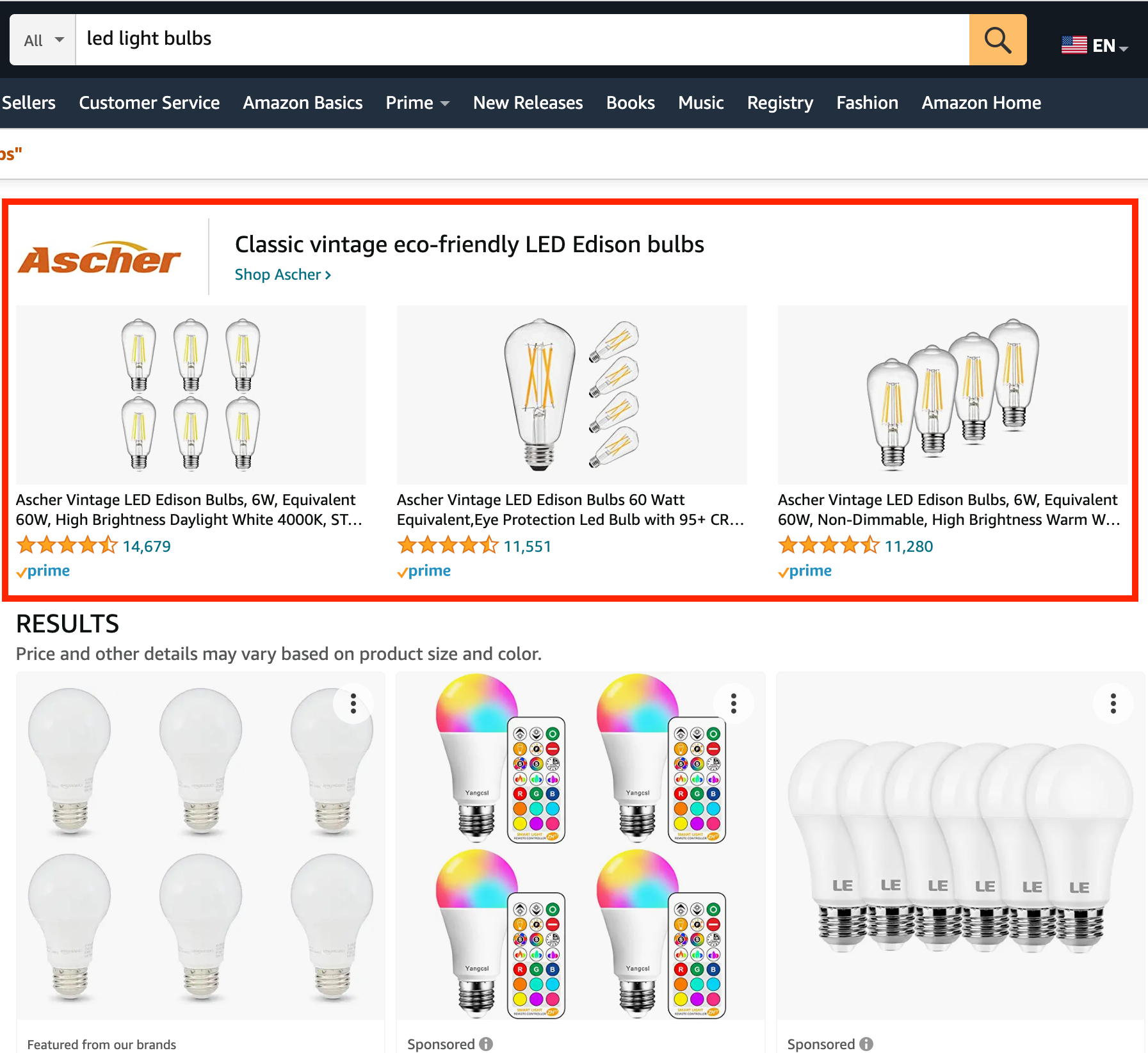
These are paid search units with more of a retail/eCommerce flavor. Appearing on retail websites like Amazon, Walmart and Target, promoted listings are served to resemble the top results for a shopping query instead of a Google-esque SERP. There’s also a slight philosophical difference here as well because of the user’s more specific intent to purchase a product, not their general consumption of content.
“In-Ad” with Native Element Units
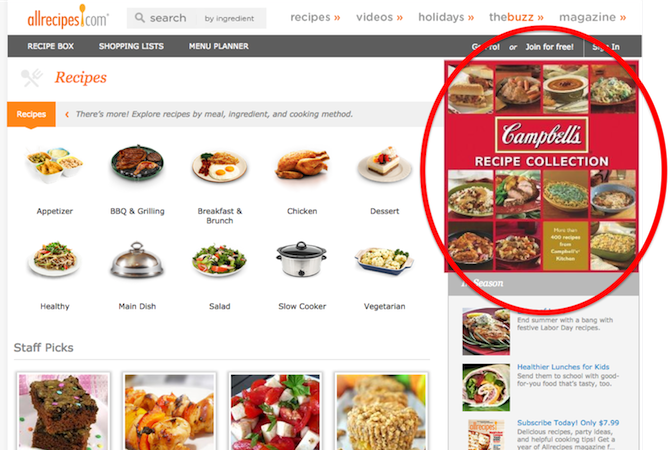
The closest to traditional display ads, these units are native to the content they’re hosted beside in a more contextual way. They promote a product directly, but they’re also directly related to the type of content that a user is consuming. This means that they’ll stand out more as actual advertisements, but they’ll have higher relevance to the user as well.
Branded/Native Video
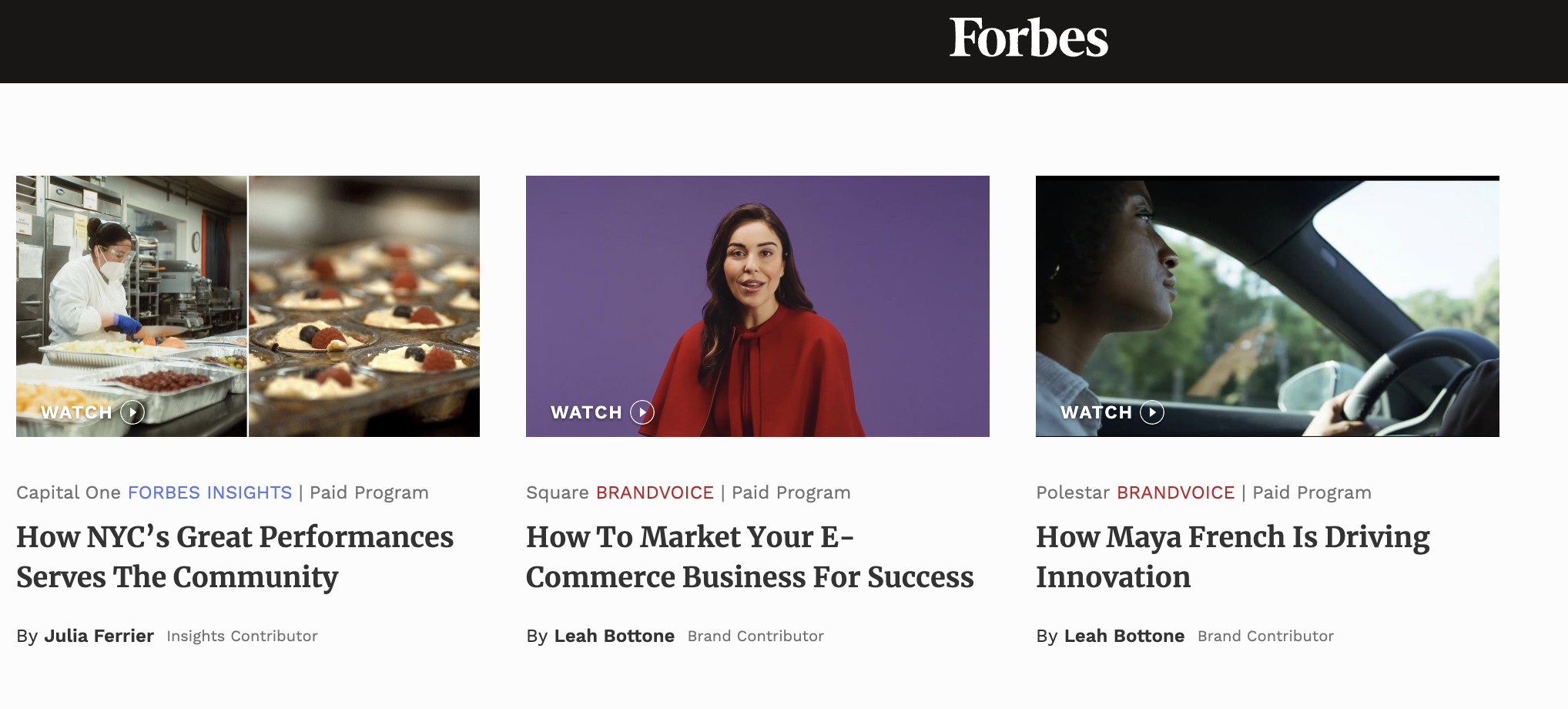
The attention-getting power of video can also be realized in a native ad environment. In practice, it’s designed to be experienced like any other video content on a publisher’s site, and properly targeted to be aligned with the user’s interests. However, it’s still important from an audience transparency standpoint to label the video as branded content.
Customized Native Ads and Mobile App Experiences

With use of more unique apps on the rise, publishers have an opportunity to incorporate native ad units in creative and seamless ways that improve performance while not detracting from the overall user experience. As long as the unit is integrated into the natural user experience of your app, there’s an opportunity to generate additional advertising revenue by making native ads available to your buyers.
How Do I Better Sell Native Ad Units?
Like so many other facets of this industry, the devil is in the details. How you’re able to approach native advertising, and what you can offer your buyers will play a large part in the overall success of your strategies. Here is how you can integrate native advertising into the pitch decks and stories you tell about your inventory.
1. Identify the Right Format for You
Depending on the type of content that you provide, some forms of native ads will make more sense for your site than others. The first step to presenting native ads as an option for your buyers is to single out the form(s) that would best lend themselves to the seamless integration you’re trying to achieve. Since design is inevitably a central part of any native strategy, you will likely also need some time to align with the departments that will be tasked with the implementation of your ideas.
Once you’ve identified the native ad format(s) you want to develop, initiate a dialogue with your product and engineering teams to assess the value of native advertising and create a reasonable timeline expectation. Present your plan and chart its execution together to keep everyone involved on the same page and avoid overloading.
2. Learn How to Show…
Simply talking about your native ad space will only get you so far. In order to demonstrate how a native ad can fit within your site aesthetic, it’s valuable for buyers to see it in action. Adding visual examples to your slides is beneficial for two big reasons. First, it allows you to set realistic expectations about the aesthetic of your native ad units, and the key differences for first-time advertisers. It would be helpful to supplement these expectations by comparing key metrics that demonstrate the competitiveness of your native ads over traditional display units.
Second, it allows buyers to see how they will be “borrowing your shine”, so to speak. As publishers, the way you package and present your content has specific value to your audiences. Just like the telltale blue hue of a Tiffany box or the interlocking G’s on Gucci products, everything, from font choice to site layout, visibly attaches your brand to the content you offer. Native ad units provide an opportunity for advertisers to leverage that brand for their purposes. Depending on the size of your audience, that can carry tremendous benefits for both yourself and your advertising partners.
3. …and Tell!
Additionally, if you happen to already have native ads in your inventory, any use cases or success stories that demonstrate a strong ROI should be prominently placed at the center of your pitch. Advertisers want to know the money they spend will draw eyes and earn business. It’s also worth noting here that research has shown that native ads are viewed as much as 53% more frequently than display ads, and provided an 18% lift in purchase intent over traditional banner ads.
Like every other form of advertising, data will be a crucial piece of the puzzle for your buyers. In order to convince them to commit to your native inventory, be sure to include data in your presentation that demonstrates native’s ability to compete with traditional display ads while adhering more closely to the ad preferences of your audience. After all, a publisher’s audience is one of its most valuable assets to any advertiser, so the ability to reach them in a way they prefer to be reached should be presented as a top priority.
It’s also important to understand who your buyers are, and contour your narrative to speak to their needs. Advertisers and their brands come from a variety of verticals, and before they buy, they need to know that their target demographics are present within your audience to a degree that’s profitable for them. Include data points that address this meaningfully, including but not limited to user age range, occupation, location, and average income. By framing your inventory in terms of advertiser vertical or the potential audience, you help buyers visualize their ads on your site before the deal has even closed.
Conclusion
These tips will go a long way toward improving your pitch for native ad inventory, but what might be even more valuable to remember is the idea that native ads are built with everyone’s interests in mind. By the nature of their design, native ads empower publishers by allowing them to serve ads that fund additional content creation. They offer a cleaner and quieter browsing experience for everyday users, and can make them more receptive to the ads they’re served. This, in turn, encourages engagement and boosts the overall effectiveness of an advertiser’s campaign. It just goes to show that the game becomes much easier to sell when it’s clear that every player wins.
DV Publisher Suite is committed to helping you analyze and optimize your entire inventory, from native to display to video and beyond. By holistically looking at revenue, performance, quality and contextual data as it relates to your inventory, you can make data-driven decisions and highlight new revenue opportunities. Request a demo today to learn more about what DV Publisher Suite can do for your team!
